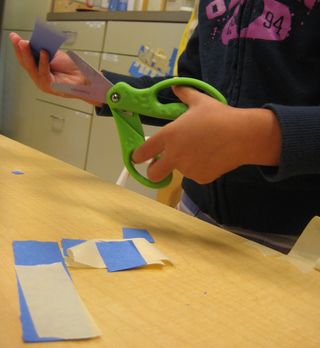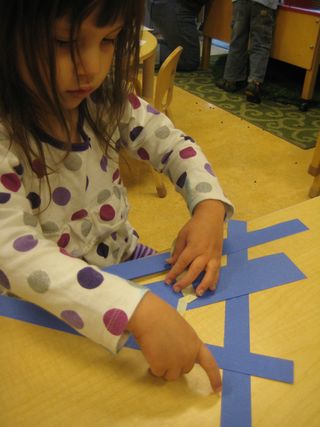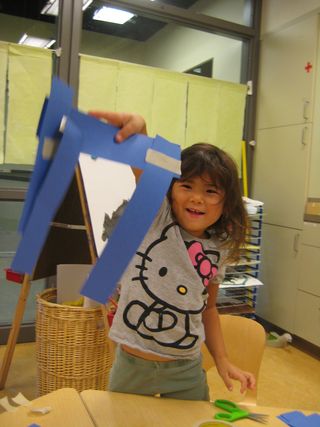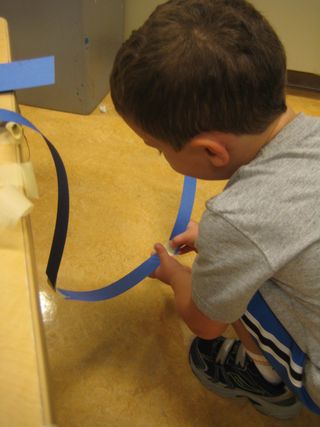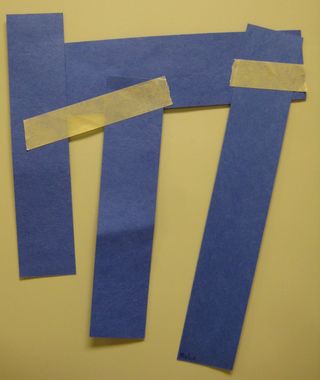Simple Materials Can Hold Complex Ideas
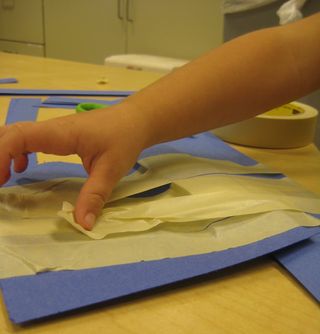
As educators we believe that young children have the
right to use a variety of materials that facilitate opportunities for
exploration, experimentation, discovery and creation.
The first studio invitation of the school year was offering the children two simple materials, blue construction paper and masking tape, with an open-ended invitation to discover what might happen when these two materials connect with one another. This question inherently conveys to the children that we know they are competent, full of ideas, that we all benefit from knowing. Although these materials are quite ordinary, this provocation or invitation, offers a window into children's thinking and their imagination. They can see a world of possibilties that live inside of these simple materials. As they manipulate the materials and see how others' use the materials, it opens up many avenues for complex ideas.
“Materials stimulate the senses, which
respond by developing networks in the brain that in time enable us . . . to build relationships among complex
ideas. Materials educate the hand, which
drives language, movement, attention, planning and scores of other brain
functions. The combination of hand and
materials is essential to virtually every endeavor.” – Ann Lewin-Benham
Teacher-Researcher Wonderings (Questions teachers pose for themselves to support observation, reflection and ongoing decision making):
- How will
deliberate, thoughtful exposure to materials support children to use these materials to express their complex ideas? - Will seeing the many ideas of others inspire new ideas within the self to explore and test a different idea?
- Given the time to explore, in what ways will children discover the
properties of masking tape and paper and their possibilities together? How will these discoveries then translate and influence them when using other, perhaps more complex, materials?
It's easy. I made a 'X'. – G.
It goes this way [opening her arms up like a 'Y']. -M.
I cut it. . . . I made a airport. -K.
It's a big one! . . .Now I'm adding another one. I'm making a big line. -B.
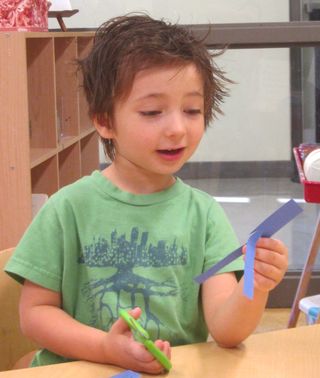
I used paper and scissors and tape and I made a grown-up [looking at the two 'legs' he cut]. -S.
I wanted to do that; what [he] did. -B.
I'm making a toy. . . It goes around, and around, and around, and around, and around. . . -L.
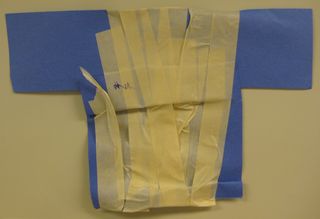
I can cut it, too. . . This is what I made [pointing to each of her pieces of tape]. -I.


